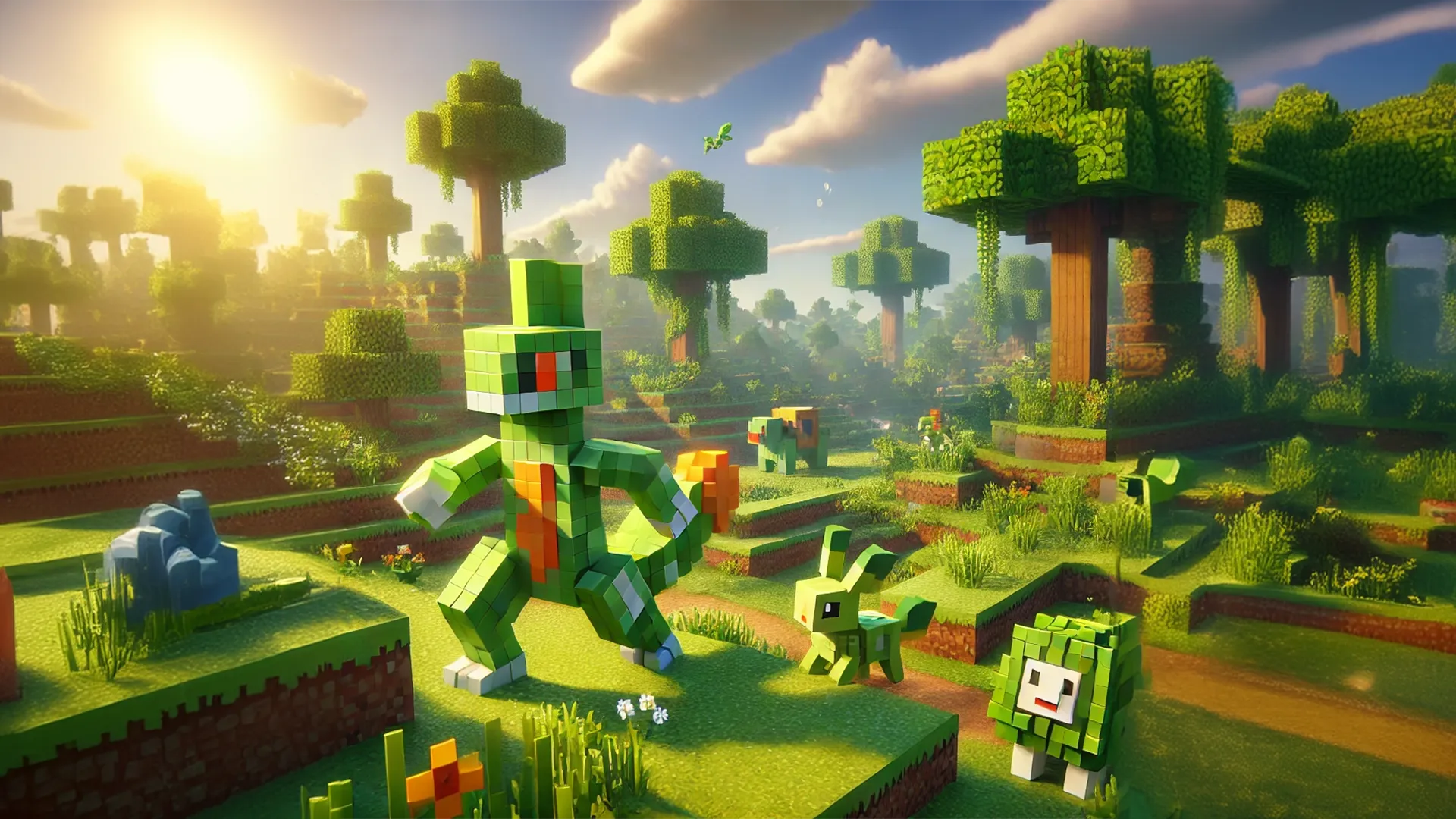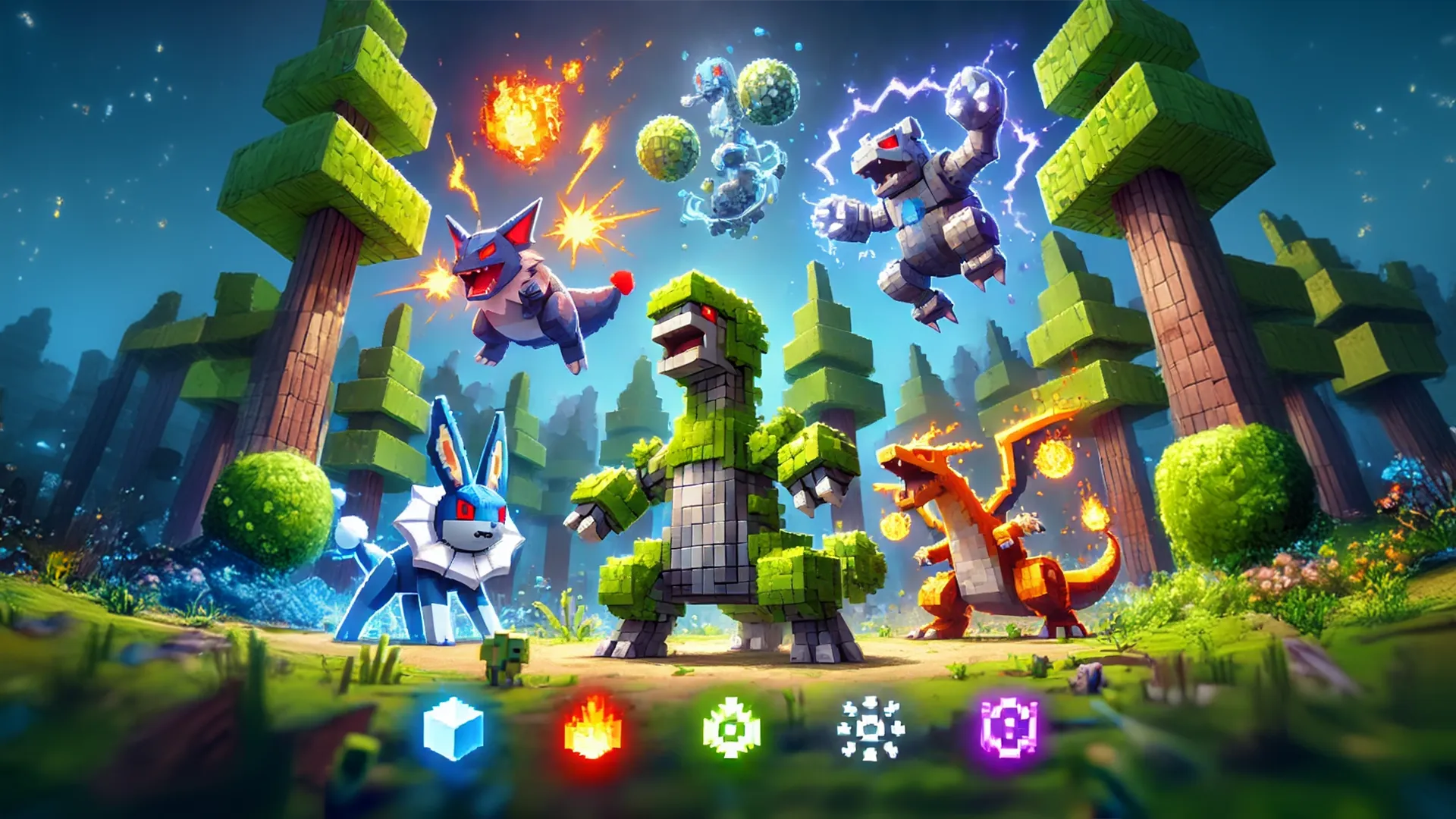In the world of Cobblemon, apricorn trees serve as a key resource, providing various materials for crafting and gameplay enhancement. One of the unique features of these trees is their leaves, known as apricorn leaves. While they might seem like a simple block at first, they offer a range of useful mechanics and can be quite versatile. In this guide, we’ll explore everything there is to know about apricorn leaves, including how to obtain them, how they generate, and their various mechanics.
How to Obtain Apricorn Leaves
Breaking Apricorn Leaves
Apricorn leaves can be obtained in a specific manner, making them somewhat different from traditional Minecraft leaves:
- Shears or Silk Touch: To successfully collect apricorn leaves, you must use shears or a tool enchanted with Silk Touch. Breaking them with any other tool or with your hand will not result in any drops.
- Default Tool: Hoes are considered the default tool for breaking apricorn leaves, offering faster block breaking compared to other tools. However, without using shears or Silk Touch, the leaves will disappear without any item drops.
This makes it essential to always have shears or a Silk Touch tool on hand if you’re looking to collect apricorn leaves for decorative or functional purposes.
Natural Generation of Apricorn Leaves
Apricorn leaves generate naturally as part of apricorn trees in various biomes. Players can encounter these trees in the wild or grow them from apricorn seeds in their base.
- Natural Biome Generation: Apricorn trees can be found scattered throughout the Cobblemon world. The apricorn leaves will appear as part of these trees' natural structure, typically located in biomes where apricorn trees are most likely to generate.
- Player-Grown Trees: If you plant and grow apricorn trees from seeds, these trees will also produce apricorn leaves. This is a great option for players who want to harvest apricorns or use the leaves as decorative blocks in their builds.
Mechanics and Unique Properties of Apricorn Leaves
Apricorn leaves function similarly to other leaf blocks in Minecraft, but they also come with several unique traits that set them apart. Below are some of their distinctive mechanics:
Decay Mechanic
- Decay: Like vanilla Minecraft leaves, apricorn leaves will naturally decay when they lose contact with a log block, meaning that if you chop down the apricorn tree’s log, the leaves will eventually disappear. However, this decay mechanic only applies to leaves that were naturally generated. Leaves placed by the player will not decay and remain in place indefinitely, making them suitable for long-term use in builds.
Light Transparency and Environmental Impact
- Transparency: Apricorn leaves are transparent to light, regardless of the game’s graphics settings. This makes them useful for builds where light needs to pass through, such as natural-looking houses, greenhouses, or other structures that require some natural illumination without blocking the light source.
- Biome-Specific Color Variations: Depending on the biome where they are placed, apricorn leaves will adjust their color slightly. This can lead to some interesting aesthetic choices for players who want to experiment with different environments and how apricorn leaves blend into them. For instance, placing the leaves in lush biomes might give them a brighter green appearance, while placing them in darker biomes may lead to a more muted tone.
Waterlogging
- Waterlogging: One unique mechanic of apricorn leaves is their ability to be waterlogged. This means you can submerge them in water, making them ideal for underwater structures or decorative pools. The waterlogging mechanic opens up several creative possibilities for builders who want to experiment with aquatic environments while still using the natural look of leaves.
Interaction with Pistons and Composting
Apricorn leaves interact in interesting ways with both pistons and composters, offering players some practical utility:
- Piston Destruction: If a piston pushes into apricorn leaves, they will be destroyed and will not drop any items. This could be an important consideration when building redstone contraptions or other mechanical structures where pistons might interact with leaf blocks.
- Composting: Apricorn leaves can be placed in composters, where they have a 30% chance of raising the compost level by 1. This makes them useful for players who want to create sustainable sources of bone meal or other compostable items. If you’re growing crops or maintaining a farm, adding apricorn leaves to a composter can speed up the process of obtaining bone meal.
How Apricorn Leaves Differ from Other Minecraft Leaves
While apricorn leaves may seem similar to other types of leaves found in Minecraft, there are some key differences that set them apart:
- No Sapling Drops: Unlike most leaves in Minecraft, apricorn leaves do not drop saplings. This is due to the fact that apricorn saplings are obtained directly from apricorn plants, not from the leaves of the tree. As a result, players won’t be able to use apricorn leaves to propagate more trees through sapling drops.
- Exclusive Collection Methods: As mentioned earlier, apricorn leaves can only be collected using shears or Silk Touch tools. This makes them a bit more exclusive compared to regular leaves, which can drop naturally when broken.
Practical Uses of Apricorn Leaves
Decorative Uses
With their aesthetic qualities and biome-based color changes, apricorn leaves are ideal for decoration in various builds. Whether you’re designing natural-looking structures, integrating them into your home’s landscaping, or adding them to gardens, apricorn leaves bring a sense of nature to any environment.
Functional Uses
Aside from being decorative, apricorn leaves have a few functional uses in the game:
- Composting: Their ability to be composted at a 30% chance means that they are a great resource for players who want to build up compost piles or create sustainable farms.
- Waterlogging: With the ability to be waterlogged, apricorn leaves can serve as unique underwater elements in aquariums, fountains, or water features in player builds.
Conclusion
Apricorn leaves may appear to be a simple block in Cobblemon, but they offer a wide range of practical and aesthetic uses. Whether you’re harvesting them for compost, using them in your builds, or creating intricate natural landscapes, apricorn leaves are versatile and valuable in the game. Make sure you have shears or Silk Touch tools ready when you need them, and enjoy experimenting with these unique blocks in your Minecraft world!



